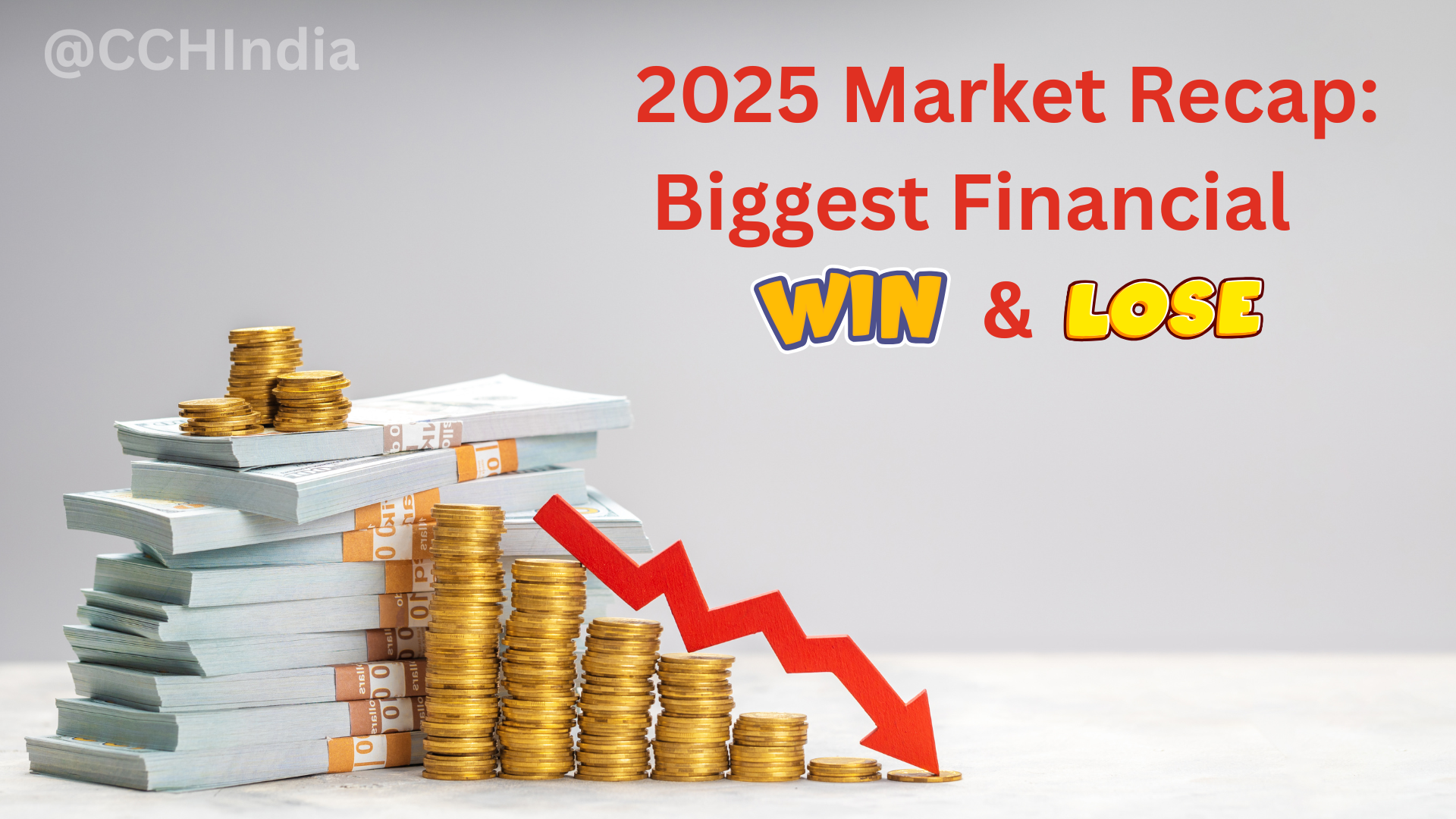महात्मा गांधी के सिद्धांत आज की दुनिया में लागू नहीं होते। क्यों?
क्या गांधीजी के सिद्धांत आज की दुनिया में प्रासंगिक हैं? इस निजी और भावुक ब्लॉग में पढ़ें कि क्यों अहिंसा, सत्य और सादगी अब 2025 की जटिल दुनिया में फिट नहीं बैठते।

Explore the key financial wins and losses of 2025 across global markets — from record rallies in select regions to sharp corrections in others — and what it means for investors heading into 2026.
The year 2025 was one of dramatic turns in the global financial landscape. After a turbulent few years of inflation, geopolitical shifts, and rapid technological advancement, markets found a new rhythm — but not without surprises. From record-breaking rallies in AI-driven stocks to sharp corrections in overvalued sectors, 2025 proved that even in a data-driven world, unpredictability remains the only constant.
Let’s dive into the biggest financial wins and losses of 2025 — and what investors, businesses, and everyday people learned from them.
Table of contents [Show]
After a shaky 2024, the technology sector roared back in 2025. Major players like NVIDIA, Microsoft, and Alphabet led the charge, fueled by breakthroughs in AI hardware, cloud computing, and automation tools.
AI-as-a-Service models became mainstream, helping both startups and enterprises deploy intelligent solutions at scale — a move that restored confidence among investors.
📈 The NASDAQ hit an all-time high in mid-2025, showing renewed trust in innovation and digital infrastructure.
Sustainability finally became more than a buzzword. Clean energy ETFs and green tech companies attracted billions in capital as countries accelerated toward net-zero goals.
Solar panel manufacturers, EV battery suppliers, and hydrogen startups saw double-digit growth, making renewable energy one of the top-performing sectors of 2025.
🌱 Investors realized that green isn’t just good for the planet — it’s good for profits.
India cemented its place as a financial powerhouse, with the Nifty 50 and Sensex consistently outperforming global indices. The government’s focus on manufacturing, infrastructure, and digital public infrastructure paid off.
Foreign Direct Investment (FDI) reached record highs, particularly in semiconductors, EVs, and fintech.
💹 India’s consistent GDP growth near 7% made it a safe haven for global investors.
AI wasn’t just a tech story — it was a financial one. Companies integrating AI into their workflows cut costs, boosted productivity, and saw stock prices soar.
Private investors poured billions into AI startups, especially those focusing on healthcare automation, financial analytics, and robotics.
🤖 AI-driven funds became the “must-have” portfolio asset of 2025.
After short-lived optimism in early 2025, the crypto market once again faced sharp declines. Over-leveraged altcoins collapsed, major exchanges faced regulatory heat, and global governments tightened digital asset controls.
Bitcoin and Ethereum remained resilient but volatile, discouraging many retail investors.
💥 Lesson learned: regulation and stability matter more than hype.
The real estate boom that began post-pandemic finally lost steam.
In major cities across the US, UK, and parts of Asia, property prices fell 10 –20%, especially in the luxury segment. Rising interest rates and reduced investor enthusiasm hit real estate funds hard.
🏠 The dream of “property always appreciates” took a reality check.
The venture capital ecosystem tightened significantly. Startups that had relied on easy funding found themselves struggling as investors demanded profitability over growth.
Layoffs hit the tech and e-commerce sectors particularly hard, and many early-stage companies either merged or shut down.
⚠️ 2025 reminded founders: sustainable growth beats flashy valuations.
Europe faced slower recovery compared to the US and Asia. Ongoing energy supply issues, geopolitical uncertainty, and a cautious ECB made markets sluggish.
Manufacturing-heavy economies like Germany saw industrial output stagnate, and investor sentiment remained cautious throughout the year.
💶 The continent’s cautious fiscal stance kept growth limited but stable.
The biggest takeaway from 2025 is simple — balance and adaptability are key. Markets rewarded innovation, sustainability, and fiscal discipline, while punishing speculation and short-term thinking.
Investors who diversified across AI, green energy, and emerging markets saw better returns than those who chased trends.
🔑 In a world where algorithms guide markets, human intuition still makes the difference.
As 2026 begins, optimism cautiously returns. Analysts expect continued strength in AI, clean energy, and Indian markets, while crypto and real estate might take longer to rebound.
The line between technology and finance continues to blur — and that intersection will likely define the decade ahead.
🌍 The smartest move for investors? Learn from 2025, plan for volatility, and stay focused on value creation.
The 2025 market recap reminds us that financial success isn’t about predicting the future — it’s about preparing for it.
From AI breakthroughs to economic resets, this year showed that the global economy is entering a new era — one shaped by innovation, discipline, and the growing influence of emerging markets.

क्या गांधीजी के सिद्धांत आज की दुनिया में प्रासंगिक हैं? इस निजी और भावुक ब्लॉग में पढ़ें कि क्यों अहिंसा, सत्य और सादगी अब 2025 की जटिल दुनिया में फिट नहीं बैठते।

Mahatma Gandhi’s ideals shaped a generation, but do they still work today? This raw, personal blog explores why non-violence, truth, and simplicity may no longer fit in our fast-paced, complex world. A thoughtful take on Gandhi’s relevance in 2025.

Explore the raw, real shifts in India's startup ecosystem in 2025 — from bold youth-led ideas to VC fatigue and desi deep tech. A personal, human take on the chaos and charm of India's evolving startup space.

